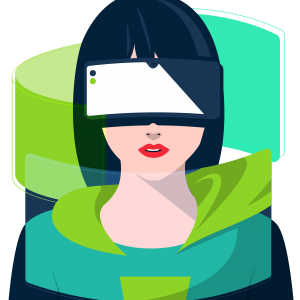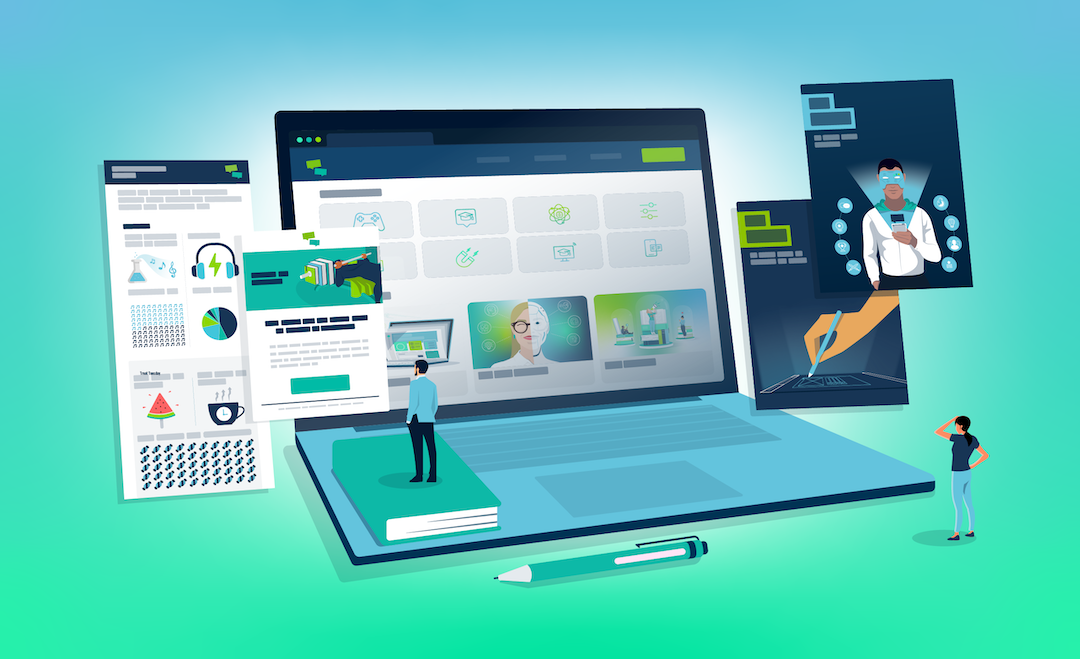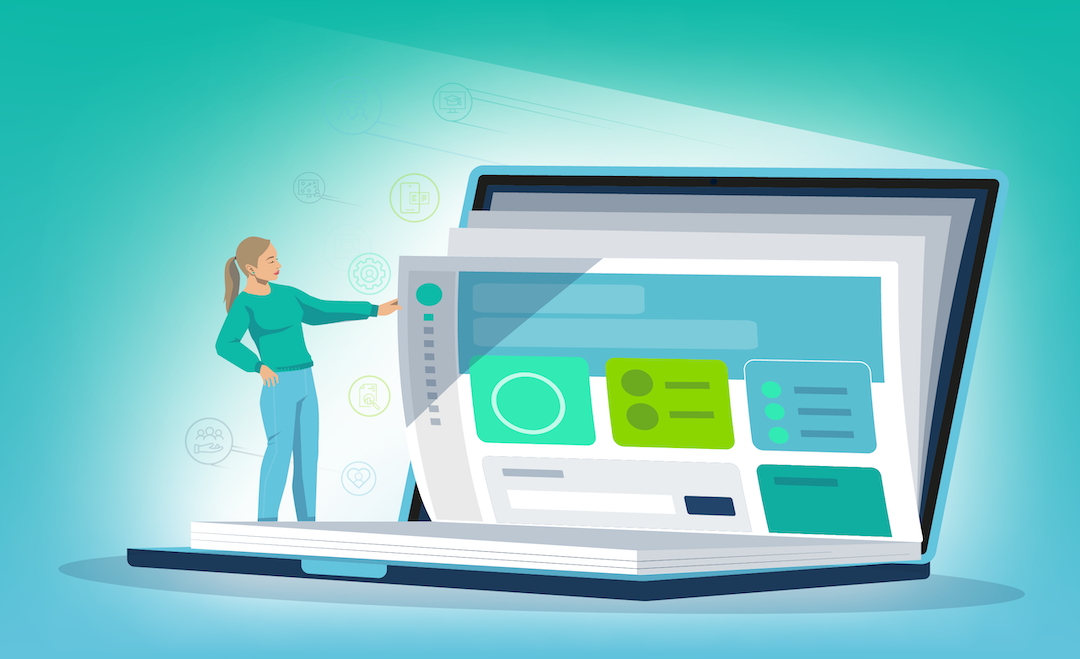
What is augmented reality? Remember Back to the Future 2? Marty takes a stroll around the world in 2015 and is suddenly startled by a digitalised shark from Jaws 19. This is augmented reality. Digital elements are overlayed real-world situations.
Unfortunately, 2015 is long gone and we still haven’t got digital sharks jumping out at us, or Jaws 19 for that matter…
In education, history teachers can now use this type of technology to walk their students around The Coliseum in ancient Athens. Biology teachers can walk their students around the human body. Physics teachers can walk students around our solar system without the concern of their bodies ballooning to twice their size and their lungs collapsing! Wahey!
This is all great, but how can we use AR to create a better training experience?
Augmented Reality Vs Virtual Reality
Augmented reality is often mistaken for virtual reality, and vice versa. But in reality, they’re virtually worlds apart…
Virtual reality (VR) is the process of immersing users in a fully digitised environment. Augmented Reality (AR), on the other hand, means immersive experience where digital objects are superimposed atop real-world surroundings.
AR may seem new and intimidating, but it’s not all that complicated. With AR, you now have the power to overlay digital content onto the real world, facilitated by your phone, or other connected devices.
Whilst the approach may be simple, there’s more to AR than Pokémon Go and Instagram filters. It can be used to improve your training offering, drive behaviour change and create lasting business impact.
Thanks to our ground-breaking Growth Engineering Learning App mobile app, you can now take full control of your content and deliver immersive and interactive learning experiences, powered by augmented reality.
Types of AR
There are different types of augmented reality, which can be utilised in different ways to meet your training needs.
- Marker-based AR: This is one of the most utilised types of AR. It uses a trigger object (for instance: a QR code, product packaging or your logo) to generate an augmented element.
- Markerless AR: As the name suggests, this type of AR doesn’t rely on a trigger object. Instead, the augmented element activates when other criteria are met (for instance, based on GPS location data associated with your device).
- Projection-based AR: With this type of AR, the only trigger you need is a flat surface. You simply point your device at a wall, or a desk and the augmented element will appear instantaneously.
- Outlining or Superimposition AR: As you might expect, this type of AR uses image recognition to digitally highlight sections of the real world. For instance, you could use it to identify patterns within an image, or to provide digital fold-lines on a piece of paper to aid budding origami practitioners.
Examples of AR in Business
1. Currys Point and Place AR App:
Customers can see what their potential new appliance would look like in their house before purchase. Currys do this by asking users to download their app. From there users can choose products to see how products look in their homes, the app then superimposes digital images over the users rooms. No more post-purchase arguments about the television looking too big for the living room!
2. Clothes Shopping
Augmented reality has now mixed with the world of fashion. You can use AR to see how you’d look trying on different outfits!
Now we know what augmented reality is, let’s find out why so many companies are excited to build it into their training:
Why Augmented Reality?
As Millennials now make up 50% of the workplace, and indeed will make up 75% of the workplace by 2025, companies are under pressure to revamp their learning and development programmes to appeal to a generation raised on digital technology. Younger staff-members require a training programme which is more in tune with their digital needs.
Approaches like AR help to expand your learning arsenal, whilst also optimising and building on more traditional approaches. There are several reasons why you should consider incorporating AR within your training approach – here are just a few of them:
1. Instantaneous Information
AR is a powerful tool because it gives your learners friction-free access to the information they need. There’s no need to search content libraries, scour the internet or find an expert. You simply point your device at the product, object or image you want to learn more about and – voila! – the relevant information will instantly display on your screen.
2. Awesome Accessibility
AR also has a lower barrier to entry than other progressive digital technologies. There’s no need for an expensive headset, or any other wearable technology. You simply aim your phone at the object in question to get the information you need.
3. Efficient Engagement
Augmented reality is, by its very nature, more visual and interactive than traditional text and video-based learning approaches. This level of immersion leads to more engaging and effective training experiences. Why rely on text-based tutorials, for instance, when you could scan a product to highlight the various steps involved to activate, utilise or fix it?
4. Safe & Secure
We learn best when we have the opportunity to practise. But this isn’t always possible with high-risk tasks. Thankfully, AR opens the door to new training experiences. For instance, you could learn how to use heavy machinery by exploring or interacting with a virtual model.
Augmented Reality in Online Learning
You might be wondering how you could incorporate AR into your training. Here are some examples:
1. In Retail:

The beauty of AR is that your learners can access exactly what they need to instantly! There’s no looking around content libraries, asking experts or watching videos. Simply point your device at the product you want to learn about and the information appears on screen in front of you.
- Designer
- Date created
- A visual representation of it being worn
- Metals/materials
- Karat number
- Price
This type of AR allows the trainees to experience the training in a more immediate and detailed manner.
Varied retailers, like perfumeries, wineries, clothes shops, or kitchen goods providers, can set up this kind of technology for all their retail outlets.
2. In the Office Environment:
Health and safety training in the office used to mean sitting in a stuffy room with a bunch of strangers watching a 1980s clip about how to pick up a box properly. No longer do we have to suffer bad haircuts and brown and orange decor!
Nowadays, when we take the all-important fire-exit walk-around, the brilliance of AR means we can now enjoy on-screen text that informs you of:
- Instructions on what to do during an emergency
- Key fire-safety points
- Evacuation points
- Step-by-step instructions on how to use a fire extinguisher
You could even set up a health and safety AR treasure hunt in which onboarders collect digital badges as rewards when they’ve completed certain units around the office. Each badge could contain a clue to the next one!
3. In the Medical Environment:
AR is already revolutionising the way we train our medical staff. AR can be used in training for complex operations to give the trainee an experience much closer to real-life than is possible with other approaches.
Bio-Flight have developed AR doctor training videos to help physicians and surgeons learn about the latest tools and methods in their chosen areas, as well as refining and boosting their knowledge retention. (Always a comfort to know your surgeon has studied!)
It doesn’t stop there. There are an inexhaustible number of applications for augmented reality within the learning and development space. For instance:
- Using product packaging to trigger an instructional video.
- Using GPS markers to trigger ‘clues’ and facilitate a treasure hunt.
- Adding character to your content, by bringing an image to life.
- Creating 3D models that can be easily explored for training purposes.
- Overlaying game mechanics into the real world (XP, Badges, Progress Bars, etc.).
- And many more.
Final Words
We are only now just beginning to understand the mammoth benefits augmented reality offers corporate training. In fact, we haven’t even scraped the surface! From AR rewards and badges, to digitising your health and safety training, the possibilities are endless. Instructors are able to gain the attention of their learners with stunning visuals, and learners get to experience situations that go far beyond anything a bone-dry paper theory can offer up.
Want to know more about advancements in training? Download our guide, ’The Future of Gamification.’








